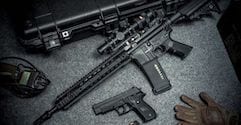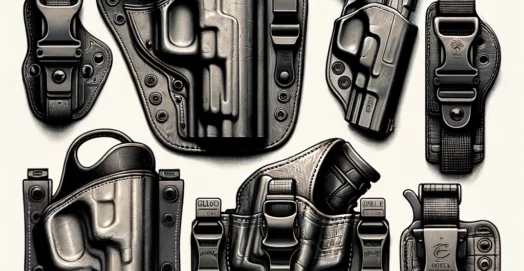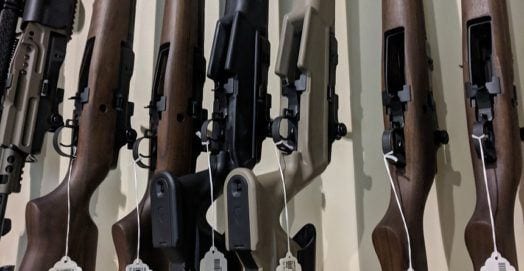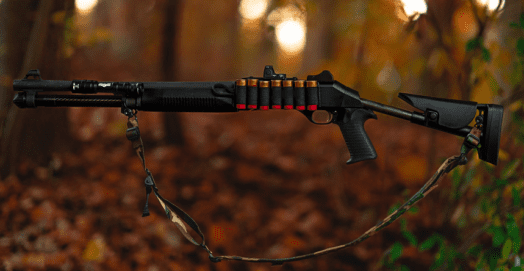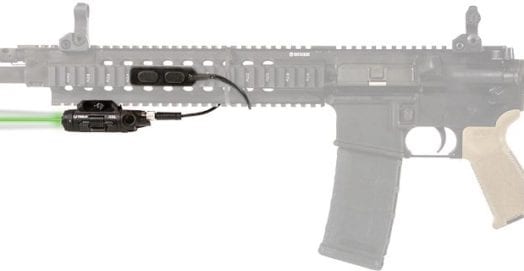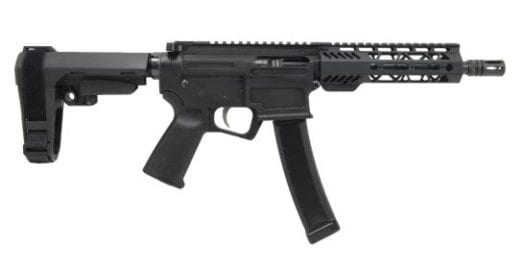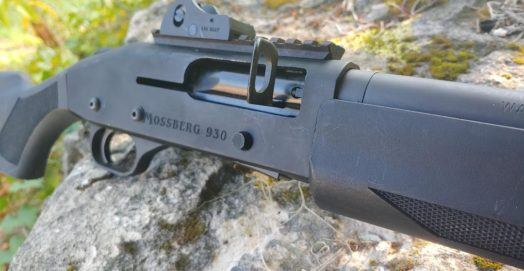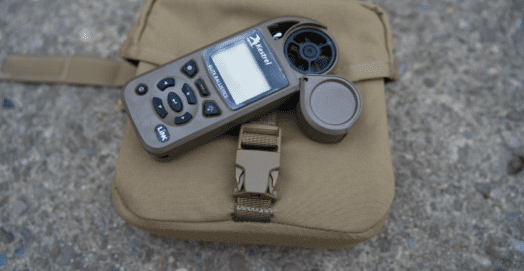The Best Complete Guide on AR-15 Calibers

The AR-15 is America’s rifle. There’s nothing else that comes close. Yet it isn’t the terminal ballistics of the 5.56 delivered from a AR-15 that has led to the rifle’s lasting popularity. Instead, it is the gun’s adaptability. And that comes from modularity – specifically the modularity of the many AR-15 calibers.
If you want a short-barreled rifle for home defense, the AR-15 would be on your short list. If you’re looking for something that can handle longer ranges and is easily carried, the AR is a great choice. Even if you are looking for a long-range tack-driver for knocking off coyotes, there are AR-15 calibers for that, too.
The gun’s modularity allows for end-users to mix-and-match pieces and components without the aid of a gunsmith. This basic philosophy allowed for units to extend the life of their service rifles, and for some soldiers to make minor customizations to their guns. For the rest of us, the AR-15 can be a blank canvas.
For many AR-15 owners, the purpose is key to finding the right rifle. Cost may also play a part. We’re going to be digging deep into the history of the rifle and the current options available for customization. If you want to build an AR-15, this is a great place to start: AR-15 calibers.
AR-15 Calibers
Any history of caliber selection has to begin with the misconception that bigger is better. Back in the days of muzzleloaders, smoothbores shot lead shot or fat balls—some of which were XXX in diameter. These lumbering beasts moved slowly but wreaked havoc with their weight. It is the old—“an object in motion tends to stay in motion” principle. And it worked. These often crushed bones. Soldiers often died from infection, if not from blood loss.
In these early days of muzzleloaders, most true rifles were smaller. This may be due to their intended purpose. Rifles, especially in the early days of this country, were meant for hunting. Many of the animals being hunted were small. Think squirrel guns. A small projectile is efficient, easy to carry, and plenty lethal. A solid powder load behind a lighter projectile, when delivered accurately, was just as deadly.

This is at the heart of the armed conflicts that defined the early days of the United States. The British, especially, wore kind enough to wear red. They brought muskets to what was—in many instances—a guerilla war.
Why are we starting the discussion of the AR-15 calibers spectrum with a long look back? It’s relevant. Stay with me.
Everyone involved with the early days of the caliber debate had solid proof that small projectiles moving through rifled barrels worked incredibly well. Even so, the military didn’t really begin to act on this information until the end of the Civil War, and then they were mostly fixated on the rifling and rate of fire.
This is understandable. The technology we use to study ballistics was wholly unavailable. For the next 100 years, infantry rifles would be big, heavy, and fire some big bullets. American sportsmen, too, loved the high-powered .30 caliber guns that dominated the first half of the twentieth century.
Europeans, though, were seeing the advantage of lighter rounds fired from lighter guns. At the end of World War II, the Russians were poaching German designs and heading off in one direction. The Americans became fixated with what some might say was little more than a mag-fed Garand.
The M14 remains a force to be reckoned with. The .308 makes that gun a fantastic option for longer shots, where precision is more important than speed. Yet even as the Garand was phased out and the M14 entered service, the Army was looking for something 100% different.
The early designs of Eugene Stoner were not chambered in .223 or 5.56. The Armalite AR-10 (built in 1955) was, like the M14, a .308. Even as the M14 was coming in, the Army was rethinking the whole concept of the battle rifle. Soldiers needed a lighter gun, but they also needed a round that wasn’t as heavy as the .308. This is, famously, how we’ve arrived at the AR-15 we know and love today. Stoner and his team were asked to scale down the AR-10. The result was adopted as the M16.
Enter the 5.56
Any AR-15 caliber considerations for contemporary ARs begin with the decades-old standard: 5.56. The round is light. Bullets are typically in the neighborhood of XX grains, and leave the barrel at 3,000 FPS +/-.
Also, standard AR-15 mag holds the 30 rounds, which is reasonably light. You can carry a couple of hundred rounds of 5.56 without any difficulty. This is a distinct advantage for a soldier.
What about the .223 for AR-15 calibers?
The .223 is a round meant for civilian sales and is regulated by SAAMI. The .223 (the term and the round) is often used interchangeably with 5.56. There is a difference, though. The topic is often debated. But you can start here. The .223 wasn’t quite up to the standards the military had set for their new rifle. It was close, though, so the 5.56 round was essentially a .223 with a bit more power. On the outside, they’re all but identical.
So can you fire a 5.56 from a rifle chambered in .223? Yes. The fear is that the .223 may not be capable of handling the increased pressure from the hotter round. Some treat this as a good reason to advise caution. The added stress can cause problems, but won’t likely cause critical failure.
I personally like the .223. There are hundreds of varieties of ammunition available. Some of it is decently cheap. But when you want high-quality ammo for accuracy, or for hunting, you will have choices.
.223 Wylde
This is a less common chambering among AR-15 calibers, but one that is intended to bridge the gap between the .223 and the 5.56. Both are welcome. The way the chamber is reamed is meant to ensure that the excess pressure isn’t a problem. It also is designed to increase the accuracy of both types of ammunition.
5.56mm NATO
If you really want to run surplus, or 5.56 ammo, you should pick up a 5.56 barrel. These are not known for their incredible accuracy, but they are durable. Again, purpose dictates your parts. A well made 5.56 NATO barrel will last a long time.
7.62 x 39
The Russians began to question the 7.62 x 39 and switched to a lighter round: the 5.45 x XX. The rest of the world, though, wasn’t impressed. They stuck with the 7.62×39.
Some of the big companies here in the states have tried to use the round in an AR platform. Rock River did an admiral job. CMMG. There are numerous boutique makers who have experimented with the platform.
There are issues with the way the rounds stack in the mags, though, that have—in many cases—caused issues. Stack 30 rounds of 5.56 flat on a flat table, then 30 rounds of 7.62×39 and you’ll see the curve is different. The magwell of an AR-15 lower should be modified to accommodate that curve.
Still, nothing beats the 7.62×39 for affordability. And the round has a proven track record. While it isn’t smoking fast, it is a hefty .30 caliber bullet. This is great rapid-fire round for hog hunting and is excellent for training.
Check out these manufacturers for AR-15 caliber options: Palmetto State Armory, Rock River Arms, CMMG.
300 Blackout

300 Blackout was developed to work on the AR platform. Again, it is a big bullet. Most of them, though, is dialed back to ensure that they stay subsonic. This is, for many, the only choice for a silencer.
The downside to 300 is the price. While the component parts have come down in price, the rounds themselves are still reasonably expensive. Since the 300 Blackout upper will work on a standard AR lower, many train with an identical 5.56 upper, and then fine-tune their skills with 300.
For 300 parts and rifles, check out Wilson Combat, or Palmetto State Armory.
.308
While we’re on the common .30 cal rounds, we can throw in the .308 one more time. Most of the AR-10s in this group are larger than their AR-15 counterparts, but they function the same. The .308 is a favorite of those who want an endless supply of ammo. The platform actually deserves its own breakdown away from the AR-15 category.
For classic AR-10s, look to Armalite.
.30-06
.308 not big enough for you? Do you want to create an even bigger hole in that hog? The .30-06 is a much less common option, as AR-15 calibers go, but they’re out there. Some see this as more of a novelty chambering, though the platform has devoted fans in areas where moose and bear pose real dangers.
If you are hankering for one of these, talk to Noreen.
6.5 Grendel
Some AR-15s are modified to fire atypical calibers. Others cartridges have been built to make the most of the platform. The 6.5 Grendel is one. These fire heavy bullets (in the 123 grain range) at mid-range speeds (2,500 +/-). The best part, though, is the design of the bullet itself keeps the round hypersonic longer—out past 1,000 yards. That makes this a dynamic and flat shooting round with exceptional terminal ballistic performance at longer ranges. Big game hunters are flocking to the 6.5 Grendel.
.22 Nosler
Those who like hunting smaller animals at longer ranges tend to value speed over mass. They like the tiny bullets that shoot flat trajectories. And the .22 Nosler is a favorite among AR-15 calibers. It fires a .224 bullet with 3,500 fps at the muzzle.
.458 SOCOM
For more than a century, a debate has raged about “knock-down power.” The basic idea is that a larger projectile (like the .45 ACP) is more effective against adversaries that are drugged up than something smaller, like a .38. Even though the round goes more slowly, it packs a punch.
This argument could have died off as ballisticians became aware of hydrostatic shock, which is produced by very fast-moving projectiles. But it hasn’t. And when some American soldiers argued that the 5.56 wasn’t stopping some adversaries, work began on something bigger. The .458 SOCOM was one of the results.
To be clear, this is a monster bullet. Some weigh in at 500 grains. It has very limited range but hits hard. The lack of availability and cost has kept it from gaining popularity outside of the hardcore tactical community.
If you’re looking for a .458 AR-15 caliber, look to Wilson Combat.
.50 Beowulf
If the .458 isn’t big enough, you might consider adding another .42 to the bullet. This is as big as it gets for domestic firearms production intended for civilian usage. And the same principles apply. These are heavy bullets that travel slowly. Alexander Arms carries this AR-15 caliber.
.50 BMG
The Beowulf isn’t the end, though. Who doesn’t want a .50 BMG? They’re incredibly loud, require a capable range, and kick like nothing else on the market.
Most of the AR-15 style builds for .50 BMG are bolt-action uppers that fit onto an AR lower. While this is a slight deviation from what we’ve been thematically covering, it still fits in what I’d call the “multi” category (i.e. one lower with lots of upper options).
AR-15 Calibers: Interlude
Have you gotten the feeling that there may be an AR-15 (or some close branch of the Stoner family tree) chambered in just about every caliber imaginable? Me too. I’ve seen many of them. I’ve fired more than a few.
Some seem to be proofs-of-concept. I may be exposing some bias here, but I don’t think the AR-15 is the end-all-be-all that many others do. If I want a reliable gun that shoots the 7.62×39, I’m going for an AK. And if I want a rifle that can deliver a .50 BMG round, I’ll likely look to a dedicated bolt action.
Others, though, have been bitten by the bug and they want an AR. There are two platforms that seem to reward their efforts.
AR-15 Calibers for Hunting

One company that is consistently cranking out great ARs is Rock River. They make guns in .204 Ruger, and .405 Bushmaster, and 6.5 and 6.8, and .243 and 7.62×39.
When I’m considering an AR-15 for hunting, I look to one question. Will I need multiple shots? If the answer is yes, as it is when hunting hogs, AR-15 calibers are ideal. The older I get, though, the more I’m beginning to see AR builds that match bolt-actions for reliability and accuracy. I’m beginning to see fewer reasons to choose one over the other.
The key for most hunting ARs, though, is the dedicated build. Heavy barrels tend to provide better accuracy. Look for free-floated barrels, too. And always test your ammo options to find a round that works well with your gun and your game.
The Pistol Caliber Carbines
The modularity of the AR platform appeals to some who are looking for 9mm rifles. They want a bit more surface area for accessories and the solidity of a stock and foregrip. The 9mm performs very well out of a slightly longer barrel, too. As an added benefit, ammo is usually cheaper (at least for training purposes).
Every common pistol caliber now has a dedicated AR that will fire it. While Colt spearheaded the designs, others have come behind. Sig, LWRC, and even the newer names like CMMG are rocking the pistol caliber carbines.
The Rimfires
One big benefit of the .223 chambering is that a .22LR will slide easily down the barrel. Some companies offer a conversion kit that will change out the bolt and magazine to run .22 LR. This is a good option for training purposes, especially for teaching brand new shooters how an AR-15 works.
Other companies, such as CMMG, make dedicated .22 LR uppers. These are far more reliable.
The Shotguns
Most AR pattern shotguns are coming in from places like Turkey, and they’re almost always built on proprietary patterns that look like someone’s idea of an AR-15, but they’re not. While they may have very similar controls, these guns aren’t modular, and that’s at the heart of the AR-15.
AR-15 Calibers: Decision Time & Parting Shots
If you’re going to build-your-own AR-15 or do-it-yourself, you have to decide where to start. Some of these platforms, like the 300 Blackout and the 5.56 can all run through one lower. That can be beneficial.
Consider these two takes on the same dilemma. Some Americans are hesitant to let Uncle Sam know how many guns they have. The registered part of an AR-15 is the lower. The rest of the parts—including multiple uppers in varying calibers—can be ordered through the mail. This allows you to have one gun that can fire many different rounds.
Some of us are married. Most AR-15 owners tend to be men, and some of those men have managed to get married and stay married. If your wife will only allow you to have one gun, it should be an AR-15. The rest of the pieces and parts all look similar to the uninitiated (so long as you don’t try to sneak home a .50 BMG upper). And if your wife asks how many guns you have, you won’t lie when you answer correctly: one.
Pistol calibers work in a standard lower, as long as you have a conversion kit of some sort for to account for the magazine and feeding issues. You’ll need a good upper, too.
Some of the larger AR-15 calibers, though, will require a much larger mag well. While it is easy to slide in a block that restricts the size of a 5.56 mag well for a 9mm magazine, it is impossible to get some of the longer rounds into a 5.56 lower.
But that doesn’t mean there’s not a benefit in altering the AR design. The biggest reason why so many are intent on making the AR fire everything from the .22 LR to the .50 BMG is the manual of arms.
Once you know your way around the AR-15, you can pick up any AR and get results. I own several AR-15s. They’re all minor variations on the theme, and all are chambered for 5.56. When I pick up my .308, I have to remember how to run a bolt-action rifle. My defensive 12 gauge is a pump and has a completely different manual of arms. See where I’m going here?
I don’t consider this a problem. I work with guns. I train regularly. I’ve never grabbed a Remington 870 and tried to eject the magazine (at least not until Remington produced a mag-fed 870, and now I’m all confused).
What if there was a 100% reliable, infallible 12 gauge AR-15? Why don’t I hunt with an AR-10? I easily could.
The meat of this argument is about familiarity. When the Army switched from the 1911 to the M9, some soldiers complained vociferously about the change. While some had legitimate concerns, many just didn’t like change.
Is there an equivalent in handguns? I’d argue that there is. Revolver development in the 1900s, much of it anyhow, was defined by homogeneity. The .38, especially, began to look and feel very similar, no matter who made it. While these guns weren’t modular, like the AR-15, they had a very familiar manual of arms.
We’re seeing something similar now, as polymer pistols take center stage. You might be able to tell the difference between a GLOCK and a Springfield Armory XD if those are the only two guns on the table. But what if I blindfolded you and put 20 different polymer-framed 9mm compact firearms on the table?
I’m not trying to convince you this is bad. You would have very little trouble picking up a Taurus or a Diamondback or a Ruger or a GLOCK and effectively putting rounds on target.
The AR-15 is a tool. As a responsible gun owner, I urge you to learn how to use the tool. If this is your first AR-15, I’d highly recommend you begin with the classic design and go with a 5.56. And then get it out on the range. Put as many rounds downrange as you can afford to shoot. And train. Take classes from those who can really run these guns.
If my experience is any guide, you won’t build just one.
Which AR-15 calibers do you prefer?




